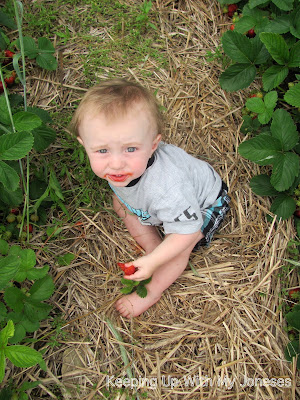Learning Primary and Secondary Colors
with "Chance Collages" inspired by Jean Arp
Jean (Hans) Arp was a part of the Dada movement that challenged existing notions of art and experimented with spontaneous, irrational methods of artistic expression. It sounds like life living with a child under 5 right?!
Arp is known for his "Chance Collages" in which he took squares or ripped smaller pieces of paper and dropped them onto a larger blank sheet of paper. Dropping the paper he relinquished the art's control and the image was up to chance.
This is a project for 3-5 year olds, but could be adapted for younger children. The focus of the project is going to be learning the primary colors: red, blue, yellow; and how to make secondary colors: orange, green and purple. They will do so by making a series of fun Arp inspired "Chance Collages".
First, materials you will need:
3 full sheets of plain white paper
Construction Paper: full sheet of red, yellow and blue,
half sheet of purple, orange and green
One of each color crayon
scissors and glue
The first "Chance Collage" will be our PRIMARY COLORS
Red, Blue and Yellow
Put all three sheets together and ask your child to name each color. You can take a few minutes and see if they can name things that are that color, red apple, blue sky, yellow sun. Explain these are the primary colors that are pure colors found all around them in the world. They can also be used to create other colors of the rainbow. (which we will be getting to...)
1. Take your full sheets and divide them in half
2. Keep one half of each sheet set the other aside
refold and cut along fold, then cut pieces into the size rectangular scraps that will be dropped onto the white paper.
(note we used kids scissors you could rip the paper)
3. Once you have cut each half sheet of red, blue and yellow into scraps get your first sheet of plain white paper ready. Your child can then pick a big hand full of scraps up all the colors and with their hands over the white paper begin to drop and scatter the pieces.
 | |
| Cy had decided that I needed to drop the paper and he needed to glue. Four year olds they know everything! |
4. Remember this is a fun project, let the pieces fall where they are going to fall even if they don't all make it onto the paper. Once your child is happy with the amount of paper pieces on their white paper you can begin gluing the pieces in place.
5. Simply raise the corners up and put a little dab of glue under each piece. You will have multiple pieces on top of each other, this will take a few minutes. You can continue your color discussion.
Then set your paper aside to dry.
The next "Chance Collages" will go on to include SECONDARY COLORS
Explain to your child that two primary colors put, mixed together make a secondary color.
Red and Yellow make Orange.
Red and Blue make Purple.
Blue and Yellow make Green.
Get out your extra half of red, blue and yellow paper you set aside. Fold it down the center length wise again and cut the fold. Now you
can help illustrate which primary colors put together make the secondary color. Lay the papers of two primary colors out and then put down the secondary color it makes, ask your child if they know that color before you tell them. (We even colored on the white paper each primary color and the secondary color)
Now for each Secondary Color "Chance Collage" each one gets its own white sheet of paper. Repeat the steps above 2-5 cut or rip your three selections of colors, scatter and glue them in place. Note you will have more scraps of the secondary color you are using a half sheet and each primary color now has a quarter of a sheet. I cut the pieces a little bigger to also illustrate that was the secondary color.
Here's the line up of all our Color Collages drying.
And a close up of each collage.
Hang them up to display your child's art work proud and continue the discussion about primary and secondary colors. See if they can remember them a few days later and let them show off their work to friends and family.
EXPLORE ART, ENJOY LIFE
















































